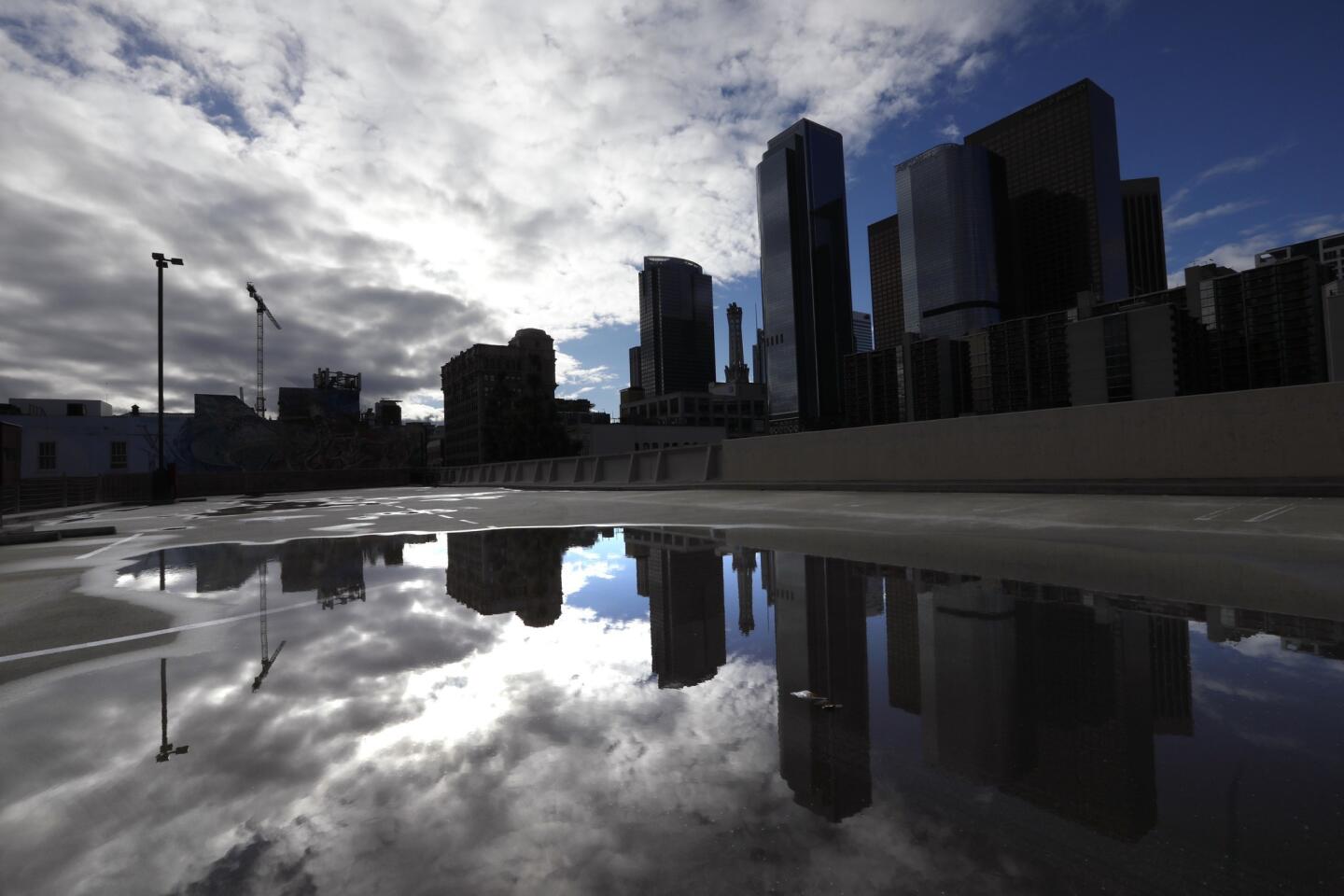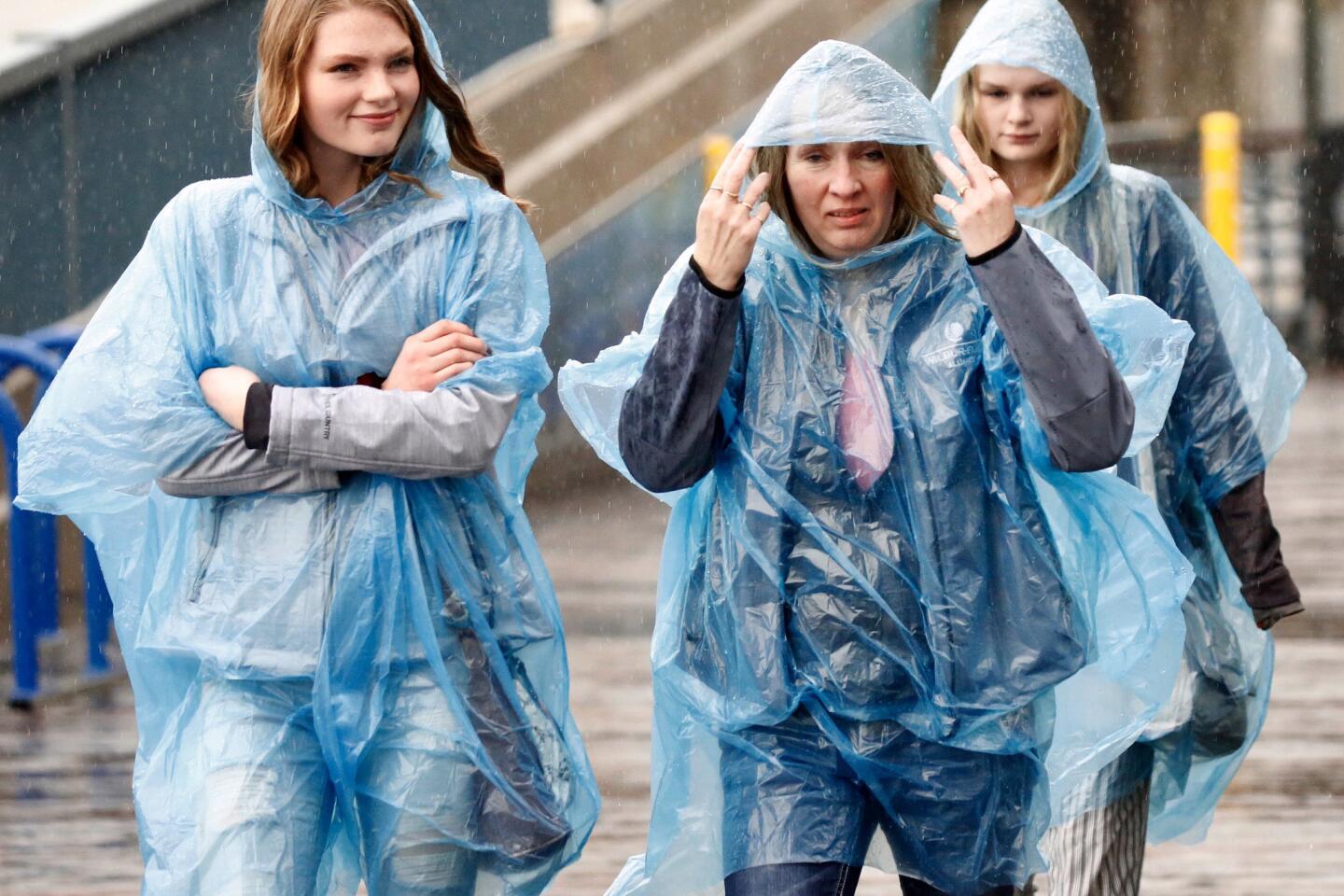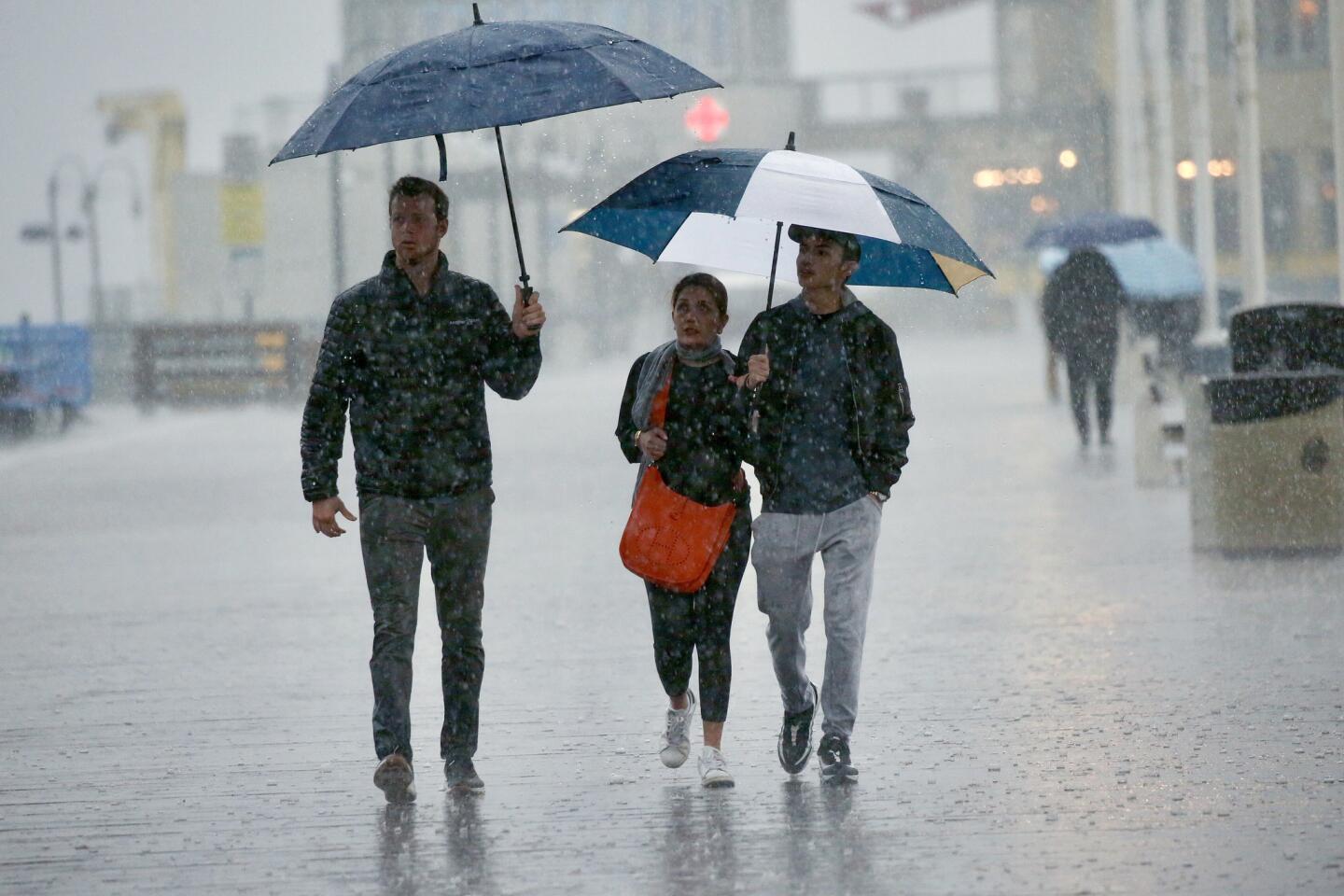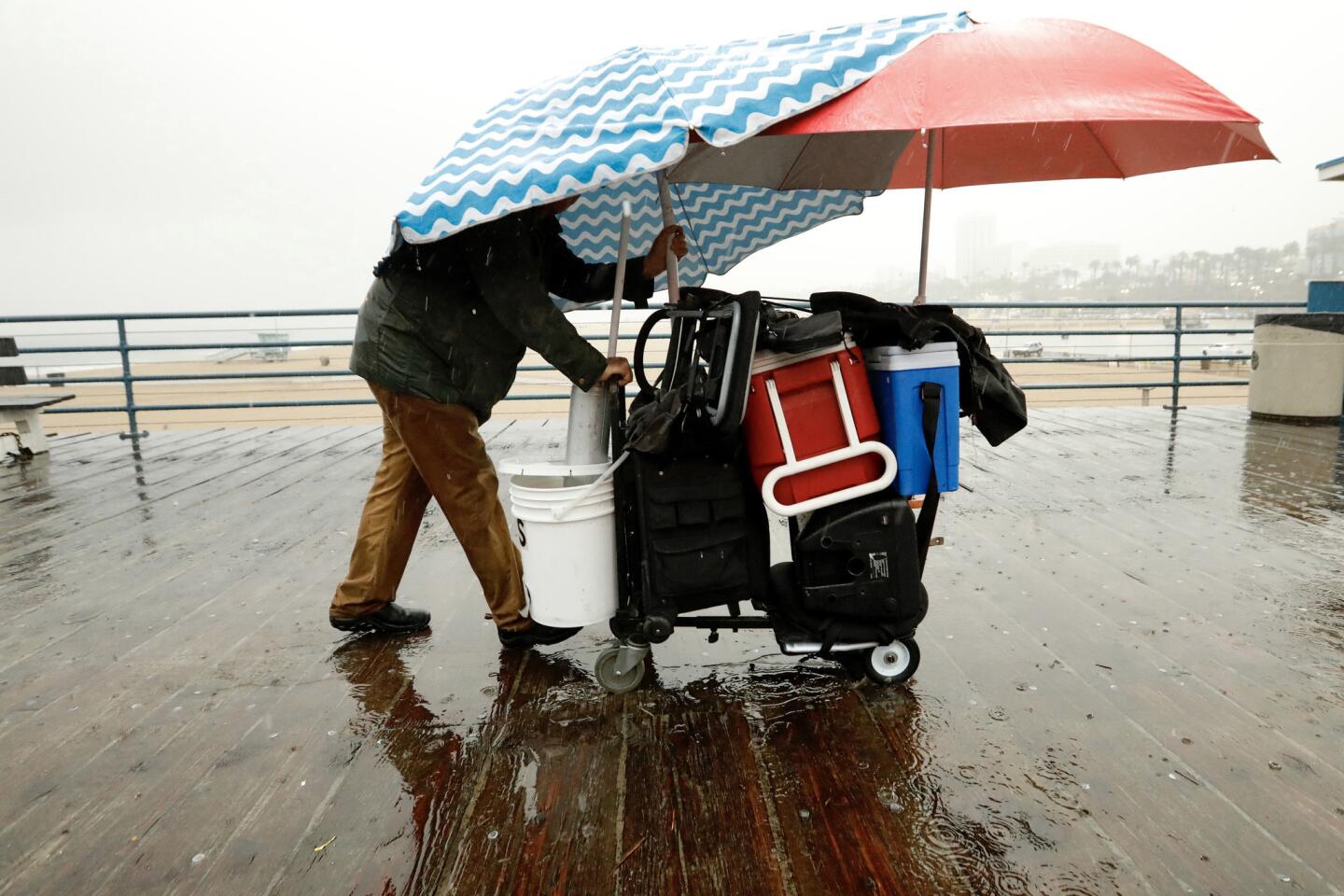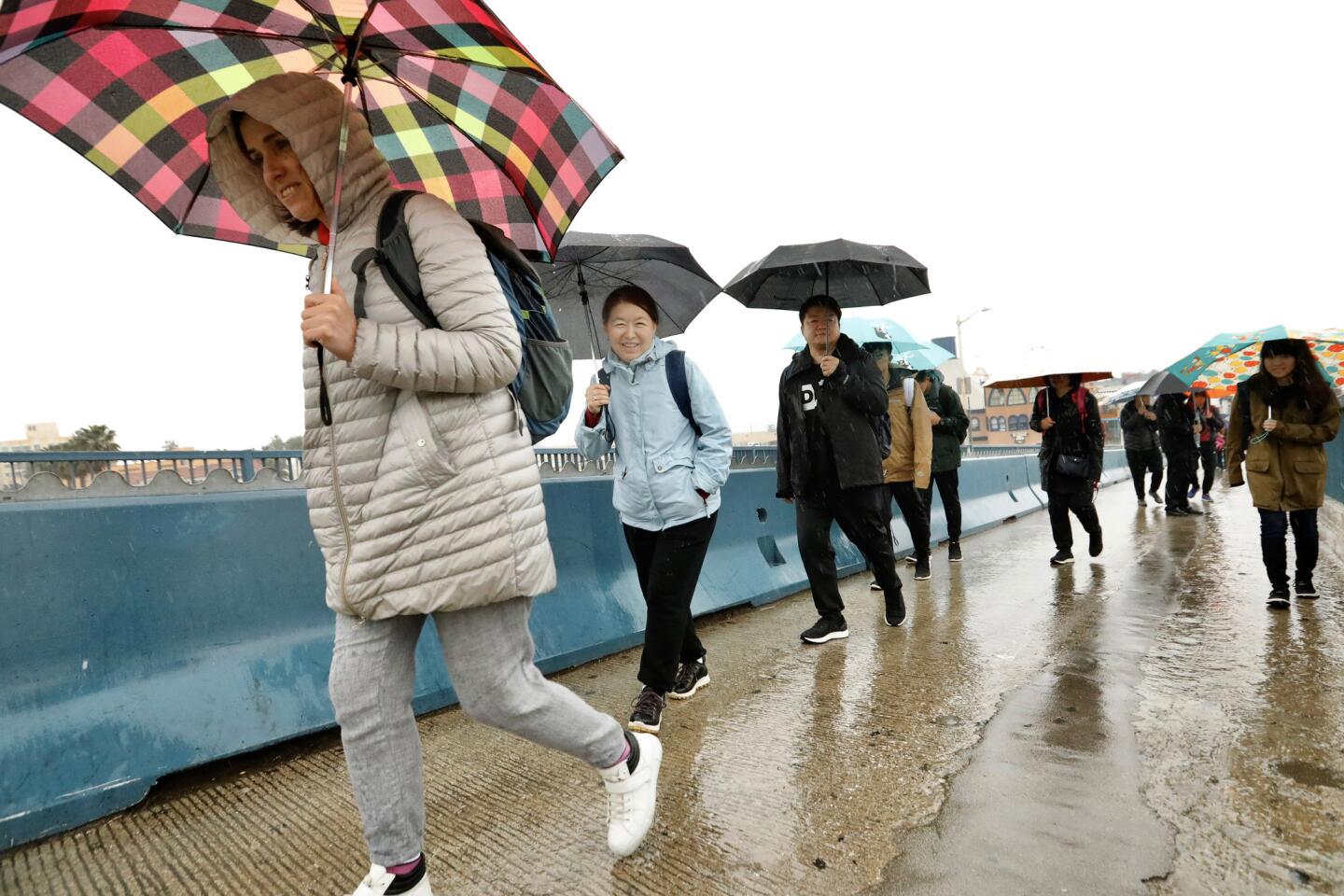Storm brings chaos to Southland, but the worst is yet to come
- Share via
Lightning struck a passenger plane after its take-off from Los Angeles International Airport, forcing an emergency landing, and the nearby Chevron refinery, causing a power outage. Heavy rain sent mud gushing onto Pacific Coast Highway and in La Tuna Canyon, prompting roadway closures and stranding two city workers.
Despite all the chaos Thursday as the first of three storms forecast for Southern California pummeled the region with heavy rain, hail, thunder and lightning, weather forecasters said the worst was yet to come.
“The second storm is the one where you want to stay home,” said Lisa Phillips of the National Weather Service in Oxnard.
That system is expected to move into the region Friday night — an atmospheric-river-fueled storm that has the potential to bring gusty southeast winds of up to 60 mph and dump 1 to 3 inches of rain through Saturday in Los Angeles County. It also may bring snow to higher elevations.
“The impacts we’re looking at are downed trees, travel delays and possible shallow debris flows,” Phillips said.
Although the heavy rain they produce can cause flooding, atmospheric rivers aren’t all bad. They also can help replenish dwindling water reserves and contribute markedly to the state’s snowpack.
Experts with the California Department of Water Resources said Thursday the series of January storms had helped double the snowpack in the Sierra Nevada.
Surveyors recorded 50 inches of snow at the department’s Phillips station, where a layer of powder covered the ground. The measurement is equal to 18 inches of water and brings the snowpack to 98% of average to date, said John King, a water resources engineer.
Overall, the state’s snowpack is at 100% of average, based on the department’s statewide snow-monitoring network, he said.
“It’s very encouraging, and we still have two more months to accumulate” before the April 1 measurement, when snowpack is typically the highest, King said.
A much weaker storm is expected to arrive in the Southland on Sunday, bringing scattered showers that could linger through Monday, forecasters said.
On Thursday, several beaches in Los Angeles and Orange counties were temporarily closed or evacuated because of lightning. Zuma Beach was closed as the storm was passing through, while Santa Monica officials evacuated the beach areas and pier. Some beaches were expected to reopen after the storm.
Meanwhile, the downpour caused mudflows on Pacific Coast Highway, prompting a portion of the roadway to be temporarily closed. The closure stretched for nearly 20 miles from Los Posas Road in Ventura County to Broad Beach Road in Los Angeles County.
No evacuations were ordered in the areas recently scarred by the Woolsey fire. Riverside County officials, however, issued mandatory evacuation orders for residents affected by the Holy fire and said those in the burn zone from last year’s Cranston fire also should prepare to leave in the event of heavy rain. The evacuation order was lifted after the rain stopped.
Thursday’s storm dumped a significant amount of rain on Santa Barbara County as it moved over the region. Rainfall rates of up to half an inch per hour were measured in some areas, prompting the National Weather Service to issue flood advisories for Santa Barbara and Ventura counties. Forecasters also issued a flash-flood watch for all the most-recent burn scars in Los Angeles, Riverside and Orange counties through 3 p.m.
In addition to thunder and rain, forecasters said hail was reported in some parts of Southern California. Some residents in Los Angeles took to Twitter to share videos of small ice pellets landing on the ground or hitting office windows.
Though the rainfall rates weren’t heavy enough to cause concerns about mudslides for the area damaged by the Thomas fire in 2017, there was potential for debris flows and flooding in other areas, said Keily Delerme, a meteorologist with the National Weather Service in Oxnard.
The slow-moving system dropped about an inch of rain in parts of Los Angeles County.
The rain could cause other hazards throughout the weekend. Authorities in Palmdale have warned the public to avoid contact with city streetlight poles during the storms because of wiring problems that could deliver an electric shock when the lights are on in the rain.
Times staff writer Alene Tchekmedyian contributed to this report.
Twitter: @AleneTchek
More to Read
Sign up for Essential California
The most important California stories and recommendations in your inbox every morning.
You may occasionally receive promotional content from the Los Angeles Times.


